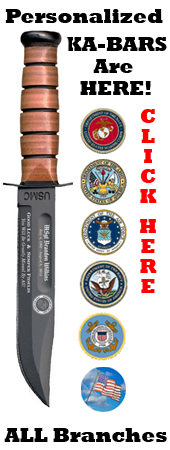The Crucible – A Rite of Passage for all Marines
click here to order this video
The Crucible A Rite of Passage for all Marines
A recruit aims his M16A1 service rifle in 1984. The Crucible is the final test in Marine recruit training, and represents the culmination of all of the skills and knowledge a future United States Marine should possess. Designed in 1996 to emphasize the importance of teamwork in overcoming adversity, the Marine Crucible is a rigorous 54-hour field training exercise demanding the application of everything a us Marine recruit has learned until that point in recruit training at MCRD Parris Island / MCRD San-Diego (Marine Corps Recruit Depot) , and includes a total of 48 miles of marching. It simulates typical combat situations with strenuous testing, hardship, and the deprivation of food and sleep. A recruit is given three MREs (Meal Ready-to-Eat, a self-contained, individual field ration, previously two and half) and four to eight hours of sleep through the entire 54-hour event. For this event, recruits are broken into squad-sized teams (possibly smaller depending on platoon size) and placed under the charge of one drill instructor (DI). West Coast recruits at MCRD San-Diego are returned toEdsonRangefor the Crucible. East coast recruits at Parris Island will conduct the Crucible in the derelict Page Airfield on the south end of the Parris Island Marine Corps Recruit Depot in Port RoyalSouth Carolina. (Formally BeaufortSouth Carolina)
Throughout the Crucible these marine recruits are faced with physical and mental challenges that must be accomplished before advancing further. Teamwork is stressed, as the majority of tasks are completely impossible without it; each group must succeed or fail as a whole unit. The others will result in failure unless every recruit passes through together, requiring the team to aid their fellow recruit(s) who struggle in the accomplishment of the given task. Also stressed are the Corps’ core values of Honor, Courage, and Commitment; events sometimes present a moral challenge. Many challenge events are named after Marine Medal of Honor recipients or otherwise notable Marines and drill instructors will often take the time to read the citation of the award and hold a guided discussion with the recruits to evaluate their moral development. Marine drill instructors are also vigilant for those recruits who succeed and fail in leadership positions.
Some of the challenges encountered during the Crucible include various team and individual obstacle courses, day and night assault courses, land navigation courses, individual rushes up steep hills at MCRD San-Diego, large-scale martial arts challenges, and countless patrols to and from each of these. Often, these challenges are made even more difficult by the additions of limitations or handicaps, such as the requirement to carry several ammunition drums, not touching portions of an obstacle painted red to indicate simulated booby traps, and evacuating team members with various simulated wounds.
On the last day of the Crucible, recruits are awoken and begin their final march (known as the “Reaper” march on the west coast). Immediately following this, recruits are offered the “Warrior’s Breakfast”, where they are permitted to eat as much as they like, even of previously forbidden foods, such as ice cream. Following this is the Eagle, Globe, and Anchor ceremony, where the young marine recruits in training receive the eponymous emblem, and thereby cease to be recruits, finally becoming US Marines. In recent years, this ceremony has been moved to the day before military graduation, and signals the start of Family Day.
Interested in the Marine Corps?
Order
your copy of “The Crucible”!


